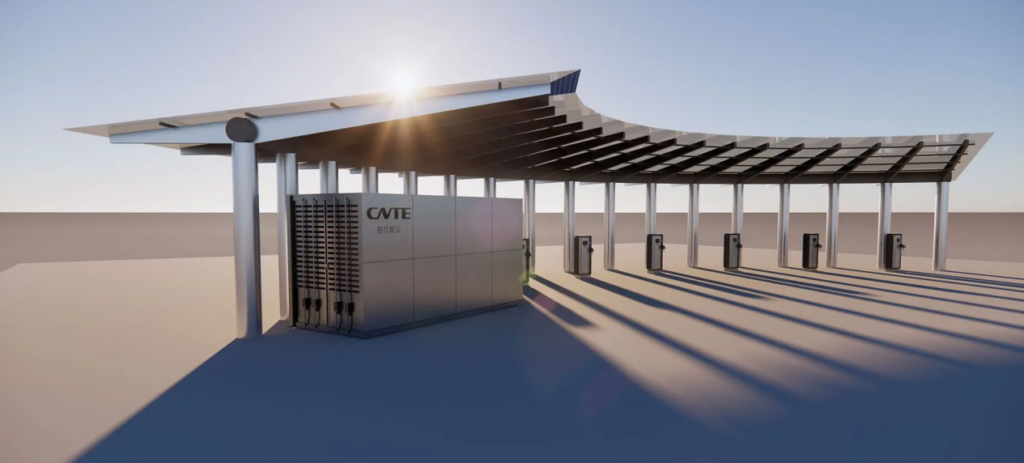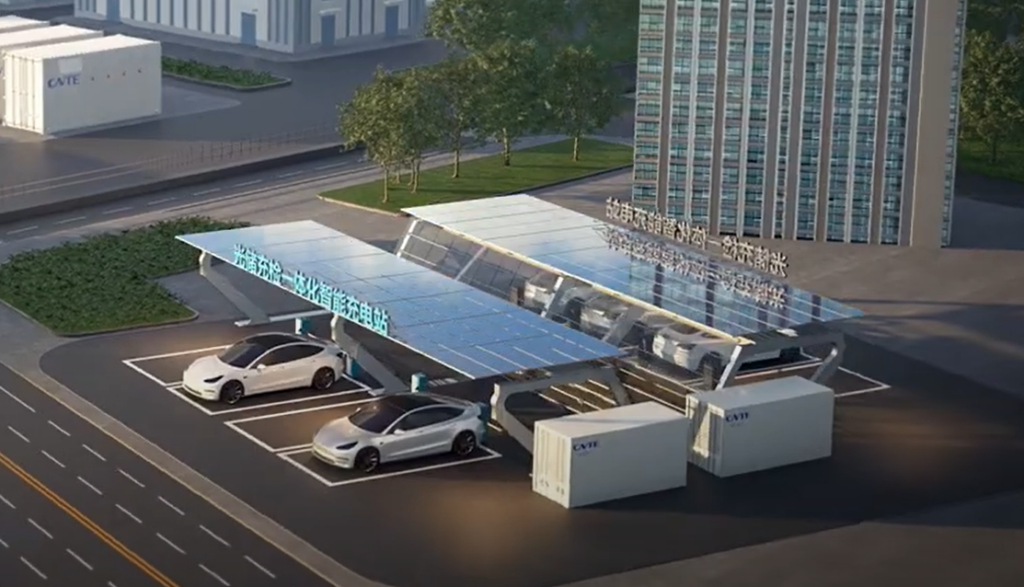2024 Key EV Charging Stations: The Future Is Electric
The global shift towards electric vehicles (EVs) is more than just a trend; it’s a vital step in combating climate change and reducing carbon emissions. As the automotive industry undergoes a significant transformation, the role of EV Charging Stations becomes increasingly crucial. These charging stations are not just power outlets; they represent the backbone of a sustainable transportation system, supporting the widespread adoption of electric vehicles.
Empowering EV Owners: Home Charging Solutions
1.1 Convenience at Your Fingertips
For EV owners, the convenience and accessibility of home charging solutions are unparalleled. With a simple installation of a home charging station, drivers can conveniently power up their vehicles overnight, ensuring they start each day with a full battery. This eliminates the need for frequent visits to public EV Charging Stations and provides peace of mind knowing their vehicle is always ready for the road.
1.2 Understanding Home Charging Stations
Home charging stations come in various forms, with Level 1 and Level 2 chargers being the most common options. Level 1 chargers use a standard household outlet and are ideal for overnight charging, albeit at a slower rate. On the other hand, Level 2 chargers require a dedicated 240-volt circuit and offer faster charging speeds, making them a popular choice for EV owners seeking quicker refueling times.
1.3 Installation and Maintenance Tips
Installing a home charging station is a straightforward process, but it’s essential to follow the manufacturer’s guidelines and consult with a qualified electrician to ensure safety and compliance. Regular maintenance, such as keeping the charging cables clean and inspecting for any signs of wear, helps prolong the lifespan of the equipment and ensures optimal performance.
Expanding Accessibility: Public Charging Networks
2.1 The Growing Network of Public Charging Stations
Across urban and rural areas, the network of public EV charging stations is rapidly expanding, providing drivers with the confidence to embark on longer journeys. These charging stations are strategically located in high-traffic areas such as shopping centers, hotels, and public parking lots, making it convenient for EV owners to recharge while going about their daily activities.
2.2 Benefits for EV Owners
Public charging networks offer numerous benefits for EV owners, including increased range confidence and accessibility. With more charging stations available, drivers can venture further from home without worrying about running out of battery power. Additionally, the growing prevalence of fast-charging stations allows for shorter charging times, minimizing downtime during long trips.
2.3 Key Players in the Charging Infrastructure Space
In the realm of public charging infrastructure, companies like ChargePoint, EVgo, and Tesla Superchargers are leading the charge. These industry giants have invested heavily in building robust charging networks and developing innovative solutions to address the evolving needs of EV owners. Their efforts have played a significant role in driving the widespread adoption of electric vehicles worldwide.
Pioneering Innovation: CNTE Charging Solutions
3.1 Advancing EV Charging Technology
Among the notable players in the EV charging industry is CNTE, a manufacturer at the forefront of innovation. With a focus on research and development, CNTE is committed to pushing the boundaries of EV charging technology, developing cutting-edge solutions that redefine the charging experience for drivers.

3.2 Charging for Tomorrow
CNTE’s charging stations are designed with the future in mind, incorporating features such as wireless charging capabilities, smart grid integration, and rapid charging speeds. By leveraging advanced technologies, CNTE aims to address the challenges of EV charging infrastructure and accelerate the transition to electric mobility on a global scale.
3.3 Partnering for Progress
In collaboration with governments, utilities, and other stakeholders, CNTE is actively working to expand access to EV charging infrastructure and promote sustainable transportation solutions. Through strategic partnerships and innovative initiatives, CNTE is paving the way for a greener, cleaner future powered by electric vehicles.
Revolutionizing EV Charging: A Look into Fast Charging Technologies
4.1 Reducing Charging Times
Fast charging technologies play a pivotal role in accelerating the adoption of electric vehicles by significantly reducing charging times. Unlike traditional charging methods, which can take hours to replenish a vehicle’s battery, fast chargers can provide a substantial boost in a matter of minutes, making EVs more practical for everyday use and long-distance travel.
4.2 Exploring Fast Charging Standards
Several fast charging standards have emerged in the EV industry, each with its own unique features and compatibility requirements. CHAdeMO, CCS (Combined Charging System), and Tesla Superchargers are among the most widely adopted standards, offering varying levels of charging power and connector types. Understanding these standards is essential for EV owners to access the most suitable charging infrastructure for their vehicles.
4.3 Advancements in Fast Charging Technology
Recent advancements in fast charging technology have further enhanced the capabilities of EV charging stations, paving the way for faster charging speeds and improved efficiency. Innovations such as liquid-cooled cables, higher voltage charging, and intelligent charging algorithms have pushed the boundaries of what’s possible, driving the widespread adoption of electric vehicles worldwide.
Unlocking the Future: Wireless Charging Innovations
5.1 Streamlining the Charging Process
Wireless charging represents a promising technology for simplifying the EV charging process, eliminating the need for physical cables and connectors. By leveraging electromagnetic induction or resonant magnetic coupling, wireless charging systems allow EVs to recharge simply by parking over a charging pad, offering unparalleled convenience and ease of use for drivers.
5.2 Principles of Wireless Charging Technology
At the heart of wireless charging technology lies the principle of electromagnetic induction, whereby an alternating current passing through a charging pad generates a magnetic field, which in turn induces a current in the receiving coil embedded within the EV. This wireless transfer of energy enables seamless charging without the need for direct physical contact, revolutionizing the way we power electric vehicles.
5.3 Recent Developments and Feasibility
In recent years, significant advancements have been made in wireless charging systems, enhancing their feasibility for widespread deployment in EV infrastructure. Improved efficiency, extended range, and compatibility with various vehicle types are among the key developments driving the adoption of wireless charging technology. With continued innovation and investment, wireless charging has the potential to reshape the future of EV charging infrastructure.
6.1 Addressing Common Challenges
Despite the rapid progress in EV charging infrastructure, several challenges persist, including range anxiety, grid capacity limitations, and interoperability issues. Range anxiety, in particular, remains a significant concern for EV owners, limiting their willingness to embrace electric mobility fully. Additionally, the strain on the electrical grid and the lack of standardized charging protocols pose obstacles to the widespread adoption of electric vehicles.

6.2 Efforts to Overcome Challenges
To overcome these challenges, stakeholders across the public and private sectors are actively collaborating to implement solutions. Government incentives, such as tax credits and subsidies for EV purchases and charging infrastructure development, are helping to spur investment and accelerate deployment. Private companies, including EV charging station manufacturers like CNTE, are investing in research and development to improve charging technology and expand accessibility.
6.3 Importance of Collaboration
Collaboration between stakeholders is essential for building a robust and sustainable EV charging ecosystem. By working together to address infrastructure challenges, develop interoperable charging solutions, and promote public awareness and education about electric mobility, we can pave the way for a cleaner, greener future powered by electric vehicles.
Conclusion
As the world embraces the electrification of transportation, the role of EV charging stations cannot be overstated. From home charging solutions to public charging networks, these infrastructure developments are essential for supporting the widespread adoption of electric vehicles. With companies like CNTE leading the way with pioneering innovations, the future of mobility is electric, clean, and sustainable.
Get in Touch
Recent Posts
Tags
- battery to grid
- better battery renewable energy
- charging station
- clean energy storage solutions
- electrical energy storage exhibition
- energy storage system solar
- energy tech battery
- ess battery system
- large solar storage batteries
- new battery storage
- optical storage integration
- pcs battery system
- price per kwh battery storage
- smart battery storage
- solar battery container
- solar energy battery storage system
- solar energy storage technology
- solar ess system
- Solar panel energy storage systems
- Solar Power Plant Battery
- solar pv and battery storage systems
- standalone energy storage systems





